North America President Ryan McCurdy On How Lenovo Is Paving The ‘AI Autobahn’ For PCs
The executive talks to CRN about why he’s optimistic about the AI PC road ahead for Lenovo, how its PC business is performing better than the overall market, how its hybrid AI strategy will benefit partners, and the appetite for alternatives to Nvidia’s popular data center GPUs.

Lenovo North American President Ryan McCurdy says the $62 billion computing behemoth is poised to unleash new software on top of fresh device offerings to drive the AI PC revolution.
“There will be a steady stream of product development to add [AI PC] hardware capabilities in a chicken-and-egg scenario for the OS and for the [independent software vendor] community to develop their latest AI capabilities on top of that hardware,” said McCurdy in an interview with CRN last month. “So we are really paving the AI autobahn from a hardware perspective so that we can get the AI software cars to go faster on them.”
[Related: HP: New Business Laptops, Workstations Part Of ‘Industry’s Largest’ AI PC Portfolio]
The Chinese tech giant kicked off this year with its first wave of AI PCs, which range from the Lenovo ThinkPad X1 Carbon laptop to the ThinkCentre neo Ultra ultra-small form factor desktop. What many of these PCs have in common is that they include a neural processing unit (NPU) in addition to a CPU and GPU to handle a variety of AI workloads.
But Lenovo is also readying its own software—in addition to offerings from Google and Microsoft—that will “differentiate” the Lenovo AI PC experience from competitors, said McCurdy, the 23-year Intel veteran who took the helm of Lenovo’s North America business last August.
“When I say software, I think there is a bit of industry-standard and then there is Lenovo-unique, which will drive our customization,” he said. “Both are important. One of them will ride the wave of the market and the Lenovo-specific will allow us to differentiate for businesses and consumers in a way that hopefully will continue to help us grow at a premium to the market.”
McCurdy said he is optimistic about the AI PC road ahead for Lenovo given the Windows 11 upgrade cycle and what he sees as the appetite for AI capabilities.
“We’re counting on those tailwinds to really boost the knee of the curve as we get into the 2024 calendar year,” he said.
To that point, McCurdy said no one is thinking they can avoid “upgrading” or “modernizing” hardware to take advantage of the AI revolution.
“Our job is to is to help them make that decision as fast as possible,” he said. “So I'm very excited. I've been doing this for 24 years, and I think it's such an exciting time to be in the industry.”
What follows is an edited transcript of CRN’s interview with McCurdy, who talked about Lenovo’s hardware and software plans for AI PCs, the company’s financial performance in the third quarter, how its hybrid AI strategy will benefit partners and the level of appetite for alternatives to Nvidia’s popular and powerful H100 data center GPU for AI workloads.
Lenovo is releasing its first wave of AI PCs in the first half of the year. On top of that, there were remarks from Lenovo in January about an AI operating system that the company is working on. Can you talk about Lenovo’s AI PC strategy from a hardware and software perspective?
If you raise up to 30,000 feet, Intel in December launched their AI PCs. So some of it's going to be the definition of AI PC. And I think in every iteration from here on out—very aligned with [Lenovo Executive Vice President of Intelligent Devices Group] Luca [Rossi’s] comments—what you’re basically going to see is enhanced modern AI hardware.
So you're going to see enhancements in the CPU; enhancements in the GPU, and then you're going to see increased performance capabilities from the NPU along with memory [enhancements].
Some of the estimates are that in just a couple of years 50 percent of PCs will be AI PCs. Some of it is up to the definition. But the way I would describe it is there will be a steady stream of product development to add hardware capabilities in a chicken-and-egg scenario for the [operating system] and for the [independent software vendor] community to develop their latest AI capabilities on top of that hardware. So we are really paving the AI autobahn from a hardware perspective so that we can get the AI software cars to go faster on them.
What you’re hearing from us is that you are going to see that in the first half with an iteration and you are going to see an iteration in the second half.
Then there are two overlays from your software question. I think there's software that will come from Google and Microsoft that can take advantage of this modern — call it AI—ready hardware. And then I think there is custom Lenovo software— [for which] you alluded to a few of them—that we will add to really differentiate the Lenovo AI PC.
So some of it is hardware. Some of it is going to be OS, ecosystem and ISV and then I think there is a unique set of solutions software that are going to be layered on top of that, all basically taking advantage of the generative AI demand but also the hardware capabilities that will open up the options to do a lot of these things. You have to have the hardware first to validate the OS and then a lot of these ISVs are working on the next-gen features for their software that will need this road.
We talked a little bit about this with the Lenovo Yoga Creator Zone [generative AI image creator] at CES on our [new Yoga laptops]. This is the ability to [generate] images, [using] text-based descriptions or sketches that can basically create these generated images.
So I think what you'll see over time is increased hardware, [the] OS and ISV external communities that can take advantage of the hardware and then you'll see Lenovo-specific software that is differentiating us from our competitors.
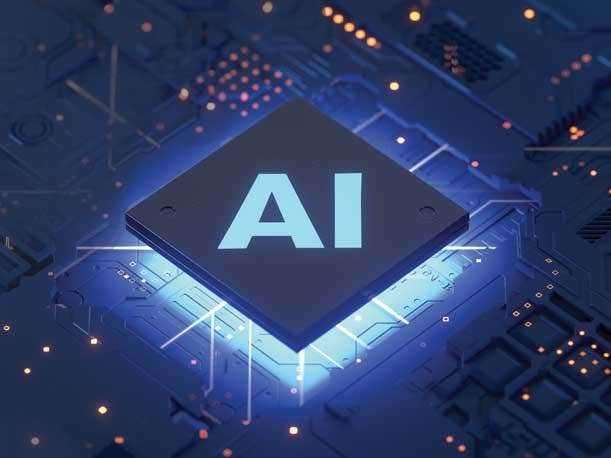
What is your overall perspective on Lenovo’s position regarding the AI opportunity?
It goes back to this record [research and development] spend [from Lenovo], you have this scenario where you can see the market is getting better. We're outperforming the market. You have this R&D component which says all of our products from services to solutions to consumer and commercial PCs to infrastructure, storage, cloud, edge, Motorola—all of that is going towards increasing the AI capabilities of this entire suite. And so you're going to start seeing these things.
We launched AI-specific pieces at CES and then you are going to get this [AI] hardware and then [AI] software. When I say software, I think there is a bit of industry-standard and then there is Lenovo-unique which will drive our customization. Both are important. One of them will ride the wave of the market, and the Lenovo-specific will allow us to differentiate in a way that businesses and consumers will that hopefully continue to help us grow at a premium to the market.
Lenovo experienced 20 percent year-over year PC sales growth for North America in the third quarter, which ended on Dec. 31, 2023. With all of the AI PCs coming out this year, do you see that growth increasing in North America?
The way I look at it is we performed much better than the market in an improving but still negative market. I think that formula and the team we have and the products we have and the solutions we have and I think back to the [R&D] investments that we're making and the Alliance partnerships that you're well aware of—that combination we’ll move forward.
We expect to beat the market. I think we can have some tailwinds with an OS [Windows 11] upgrade and this AI excitement on top of a very aged large installed base. We think that's the differentiator for us. So I think I’m very optimistic.
You can count on us to be outpacing the market. And hopefully we can get some help from the market, which is in the forecast. I think it's just a matter of first half or second half as consumers and commercial customers decide when's the time to pull the trigger.
Nobody's thinking that they can avoid upgrading and modernizing their hardware to take advantage of what's upon us and what's coming. Our job is to is to help them make that decision as fast as possible. So I'm very excited. I've been doing this for 24 years, and I think it's such an exciting time to be in the industry.
I can't recall ever just seeing just so many new amazing things that we can do with the products that we sell. I think it's an exciting time, and I think Lenovo is a great partner to go through that journey with, given all the things we talked about: the partnerships and the investments that we're making. Being a very channel-focused partner company is certainly a differentiator. And then we talked at length about the portfolio.
Lenovo is the place to be. The industry is right on the cusp of another revolution. You had the internet and now you have this AI revolution. It's very exciting time!
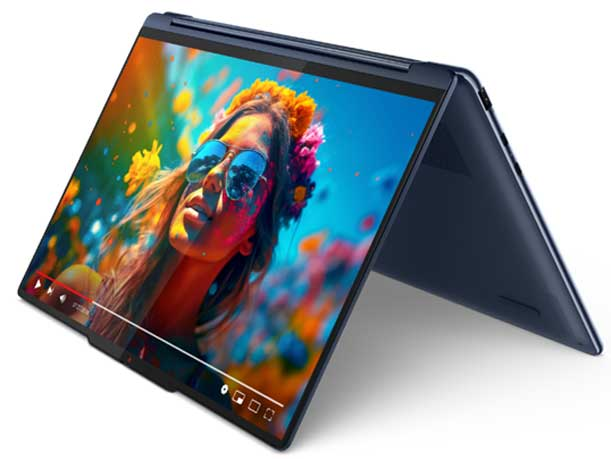
Is AI about to drive a new wave of innovation for PC applications?
Coming from the hardware side, it is just apparent to me that a lot of this stuff can't fully be seen until you launch the product. With the internet there were so many things that needed the road to expose itself. And once that highway was there, you just saw continued non-forecasted use cases. and now I think we're going to see the same thing [with AI] but really on steroids.
How would you sum it up?
There's some cool AI stuff that we talked about at CES for the phones, and there's some stuff on the PC and some stuff in the data center.
The story is the market is better, Lenovo is beating the market, and we're in a really good spot to see the future take off. And then when you combine our portfolio with the investment we are making, how we are beating the market, and then we are differentiating ourselves and also partnering closely.
AI is not in a single point. Sometimes illustrating that and showing it in a business case; in a consumer case; in a mobile case, helps people understand how powerful it’s going to be.
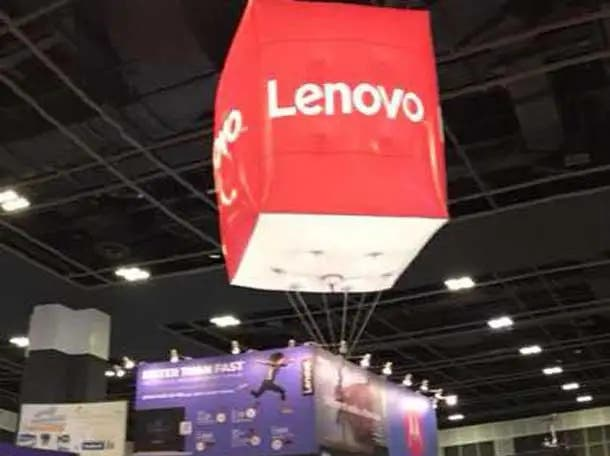
What were some of the highlights of Lenovo’s third quarter, which ended on Dec. 31?
Starting at the global level, it was great to deliver year-over-year revenue growth and improved profitability. I think that really positions us well after what IDC reported as the 10th quarter of [overall] negative year-over-year [performance] in the PC market. So finding our way to growth and improved profitability sets the stage for this AI PC ramp and the future of hybrid AI.
So it was a strong quarter where we maintained the number one position globally, from a PC perspective, with just about 24 percent market share.
One of the highlights is the Solutions and Services Group, with record revenues, double-digit year-over-year growth and profit. Basically, the double click on that is the services-led transformation. Forty percent of our revenue comes outside of the PC [business]. In this quarter, it was 42 percent. So, I think it's good to have a key core strategy that's showing itself in the results of the business
We’re on track for a record year in R&D [spending]. So you see continued focus and investment in innovation. I think we haven't spoken since CES […] That was a very exciting, successful way to start the year with 45 new products with new AI PC capabilities and 105 awards.
At a global level, there's a lot of momentum, both in our business results and I think also in the trajectory of the market overall.
If I go down to North America, our business here continues to be significant contributor to that global success with $3.5 billion dollars, nearly a quarter of the total company revenue.
But I think other than the size and the contribution to the total, I’m really proud of that in a slightly down market in North America, we reported 20 percent PC revenue growth. That was referenced in some of the earnings, which we're very proud of. I think we see that as a leading indicator of what we can do in an average market. And with the emergence of the AI PC, this refresh cycle boom and the Win 11 upgrade, I think there's a tremendous opportunity for Lenovo and our partners.
Canada remained number one. I mentioned the Solutions and Services [performance]. We see double digit increases in bookings which is commensurate with that increase in that services led transformation. So North America is no exception.
Lastly, on the earnings would just be my commentary around the market.
We saw a significant premium to the market [for] our very large business [customers], which [are] 1,000 seats and above. [We also saw] almost 30 points of premium in the public sector business, which is education and government, 15 points in consumer and then 15 points overall. I look at that as the highlight in what I think is the macro improving and we are out-performing.
The market we would all look at and say, it is not great, but it is certainly recovering, and we see green shoots as we look toward the forecast and what we're seeing in the current quarter right now, but then we're outperforming that market.
I think we're preparing for the tailwinds of a Windows [11] and AI [upgrade cycle] for a huge installed base post-COVID. We’re counting on those tailwinds to really boost the knee of the curve as we get into the 2024 calendar year.
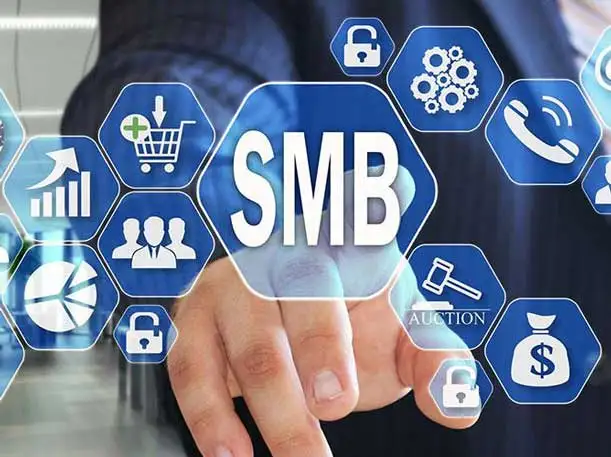
You mentioned Lenovo had a premium to the market in consumer, SMB, public sector and enterprise. What was key to that performance in a down market?
Starting with the very large business space, when you look at our ThinkPad lineup from a quality, reliability and overall performance perspective, we are seeing that is a workhorse. It’s the original commercial PC. We continue to innovate on it. We're seeing customers continue to lean in. We also made changes in our salesforce to support that […] We're really leading in in that space. It's a very profitable piece of the business for us. So I think it's a combination of our structure and the product leadership. That’s in the 1,000 seats and above.
The public sector is a two-pronged answer: We have a leadership position in education in the Chrome[OS] space. But I also think we're under-penetrated in public sector. This has been a big focus in my first six months.
SMB is the exact same answer. We have a good position there, but this is an area where we see a lot of opportunity. Regardless of the market, we see that we have an opportunity to grow. This is really a big focus with our channel partners as well to focus on this piece of the business, which may be a bit different than one of my competitor’s strategies.
How did the infrastructure business and AI servers do in North America?
For infrastructure, a highlight continues to be high-performance computing with the product that we have, which is water-cooled and continues to be very highly sought after in the HPC space. We're expanding that footprint.
We definitely see a tremendous opportunity to your question on the AI infrastructure. I commented a bit on the health of the market on the PC side. I still think there's probably a quarter or two of that same digestion [in the server business] that we saw if you look at the cycles. The data center may be lagging a bit there. So I think there's probably a little bit of market sluggishness, but I don't think there's any difference in the customer demand for—call it modern infrastructure.
Pretty much every customer partner conversation is around the use cases and specific ways that you can translate the hype of this AI wave to specific use cases and efficiencies.
For Lenovo, we really believe in the hybrid AI model. This hybrid model really looks at those public, private and personal foundational models and says that the highest level of value that will be delivered will be a custom experience that doesn't just rely on public data. There [are] pretty amazing releases almost daily around the public [cloud] side, but I think a lot of the value from the corporate side is going to be in that marriage of the public model with the commercial model, or call it private model, and then the personal model. So it's Dylan’s or Ryan's data married with our CRN or Lenovo company preferences that we don't want in the public cloud, and then all the goodness that comes from the public model. This is the strategy that we laid out at [Lenovo’s] Tech World [event] last fall.
We’re seeing this resonate very strongly with partners and customers, because honestly there's a limit to the value that AI can bring to a business or an individual when it's not also married with those personal and private models as well.
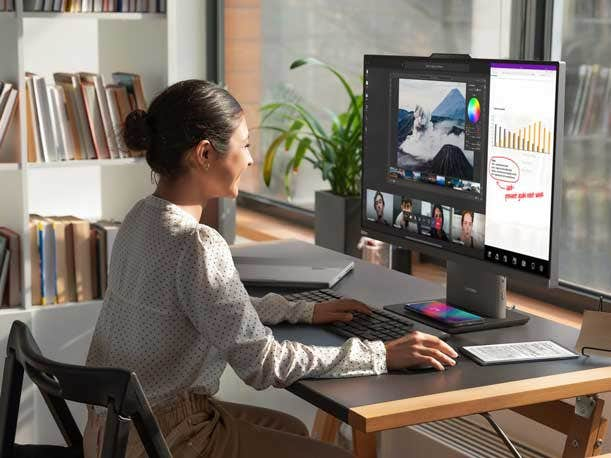
Lenovo’s hybrid AI strategy touches everything from smartphones and PCs to data centers and cloud infrastructure. What are the opportunities for channel partners there?
I just came out of a partner meeting downstairs at our EBC [Executive Briefing Center]. I think the Lenovo advantage is the portfolio. So when you look at AI, it's not happening on an individual device in the ecosystem or a portion of the data center or a particular business unit within a company's operations. It is in [human resources]. It is in operations. It is in product development. There are numerous AI use cases in the phone, in the consumer PC and the commercial PC. Then there's a hierarchy with workstations, servers and edge compute with the fastest-growing workloads.
What that provides for channel partners is a partner [in Lenovo] that doesn't do just a piece of the AI orchestration and environment. There is just a ton of synergy between all these building blocks, which gives Lenovo a unique advantage with our portfolio.
And then AI, again, is not a point where you're doing it at one of the endpoints or a portion of the infrastructure. There are software pieces to it. There are solutions pieces to it. There is storage, networking, and compute. It's across the portfolio.
So I think in the end, that's where AI will sit across the portfolio and Lenovo’s portfolio is amongst the most robust in the industry, given the Motorola assets and the [Infrastructure Solutions Group]. PC is obvious, and there’s really strong set of products that we announced at CES. That will be a drumbeat of every [PC] product that comes out from here as the next iteration of the AI PC, but there’s services and solutions as well. Our partners want to not only engage within customers with the portfolio of products, but also with these solutions and services. So I think in a nutshell that is the competitive differentiation and the advantage for Lenovo.
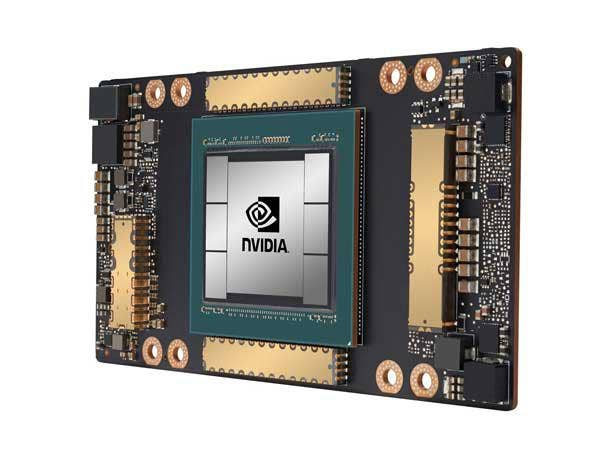
What was the supply situation with Nvidia GPUs in the third quarter?
If you compare it to the darkest days of the pandemic, I would say you could almost say we're in a very supply equilibrium-type environment.
With a 260-million-unit [total addressable market] in PCs and an enormous data center [market], there's always supply chain challenges. There are some components that are increasing in price, and I think this is where it comes down [Lenovo] to being ranked a top 25 [supply chain company] coming in at eighth place [according to IDC]. That is where the [Lenovo] scale and the portfolio matters when it comes to the supply chain, and there's only a couple [of companies] that can probably say that they have that scale to leverage the supply chain.
With Nvidia, I think there's obviously lead times associated with it, and there's some end customer identification, to make sure that the products are going to certain identified end customers.
As we showcased at Tech World with Nvidia on stage, AMD on stage, Intel on stage and Microsoft on stage, those industry partnerships are critical to not only how we operate on a tactical supply chain question but also on a strategic what's our value proposition. Our value proposition is that we're going to be bringing products to the market on the datacenter side and on the client side that represent the spectrum of those partners.
So I think that also provides for some incremental optionality over time when it comes to AI solutions or AI PCs. And then specifically for your Nvidia question, there are some signals that lead times are decreasing on some products. It's still an issue to deal with, and you deal with it from the leadership position of having strong relationships and really winning the end customer. That's a lot of times the secret sauce to making sure we're taken care of.
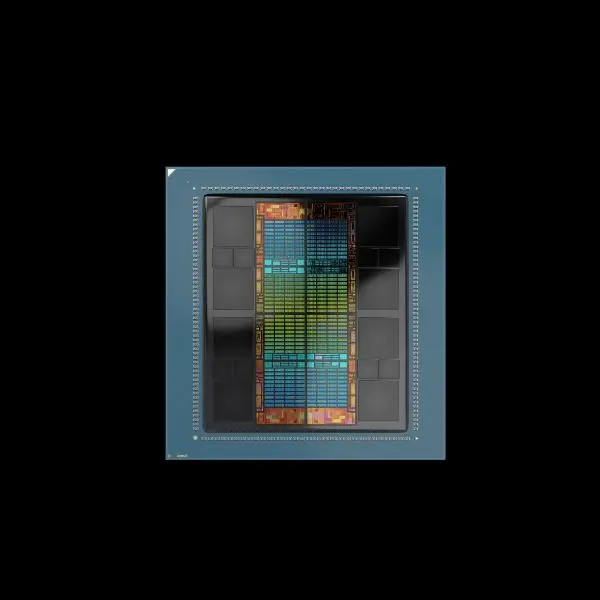
Lenovo was one of the OEMs announced to support AMD’s Instinct MI300X GPU, which will compete with Nvidia’s popular and powerful H100 GPU for demanding AI workloads. Do you have any sense of the demand you will see for that?
I won't comment on an unreleased product, but the partnership I think illustrates the larger point, which is the industry is looking for a broad array of options. Obviously, when you have any sort of lead times, especially six-month, nine-month and 12-month lead times, there is interest in this incredible technology to be more broadly available.
And I think that your question illustrates my last answer to those partnerships, which is we're not constraining ourselves. We want to provide our customers with the broadest range of choice. And I think those partnerships will show itself in future launches with products that we're bringing out across our portfolio: Nvidia for sure, AMD for sure, Intel for sure, and Microsoft.
I think you could say in a very generic sense, demand is as high as we've ever seen for the product. And then it comes down to getting the infrastructure launched, getting testing done, and getting workloads validated, and all that work is underway.
So I think there is a very hungry end customer-partner user base when it comes to alternatives and a more broad, diverse set of solutions.